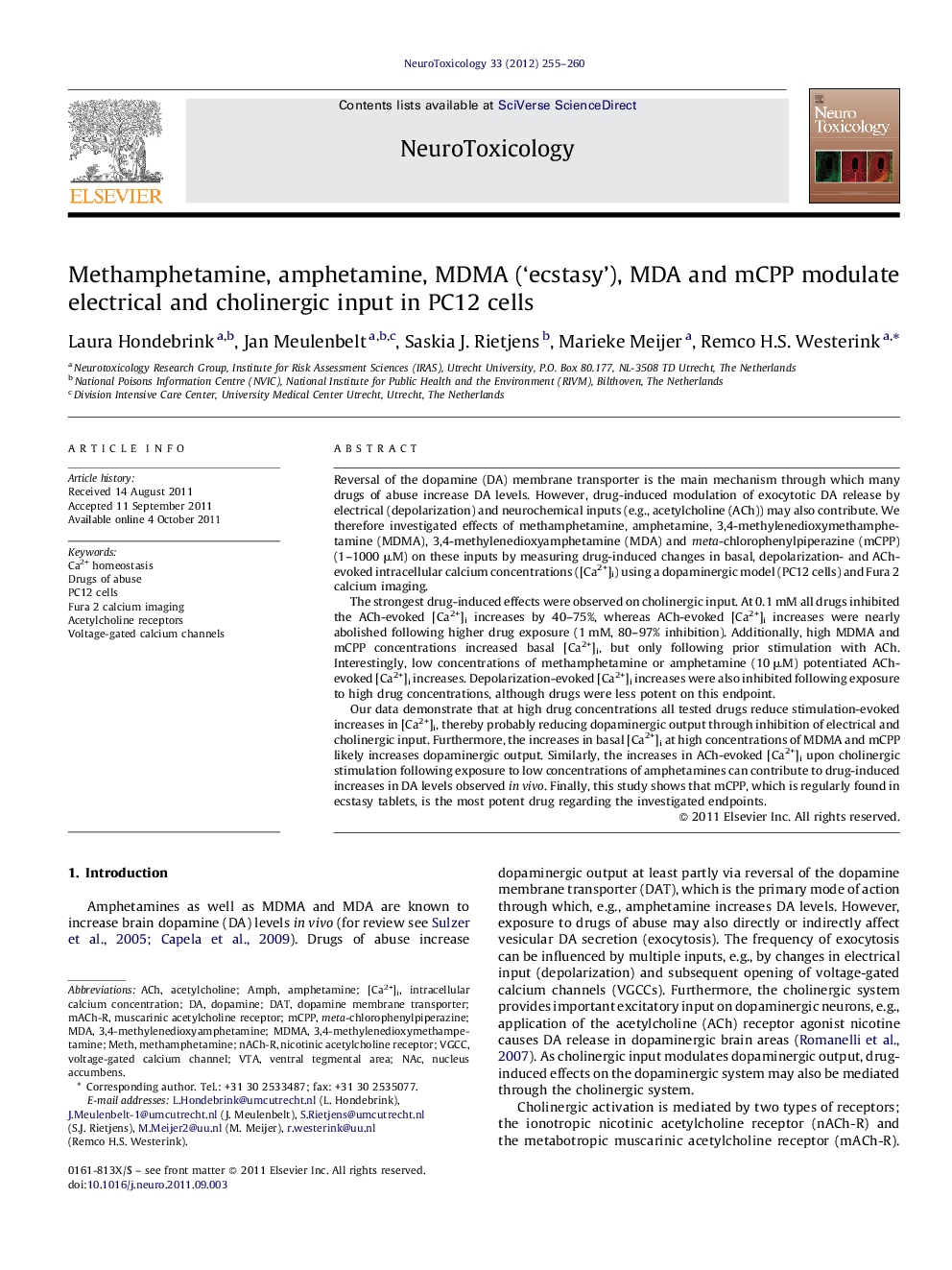| Article ID | Journal | Published Year | Pages | File Type |
|---|---|---|---|---|
| 2590354 | NeuroToxicology | 2012 | 6 Pages |
Reversal of the dopamine (DA) membrane transporter is the main mechanism through which many drugs of abuse increase DA levels. However, drug-induced modulation of exocytotic DA release by electrical (depolarization) and neurochemical inputs (e.g., acetylcholine (ACh)) may also contribute. We therefore investigated effects of methamphetamine, amphetamine, 3,4-methylenedioxymethamphetamine (MDMA), 3,4-methylenedioxyamphetamine (MDA) and meta-chlorophenylpiperazine (mCPP) (1–1000 μM) on these inputs by measuring drug-induced changes in basal, depolarization- and ACh-evoked intracellular calcium concentrations ([Ca2+]i) using a dopaminergic model (PC12 cells) and Fura 2 calcium imaging.The strongest drug-induced effects were observed on cholinergic input. At 0.1 mM all drugs inhibited the ACh-evoked [Ca2+]i increases by 40–75%, whereas ACh-evoked [Ca2+]i increases were nearly abolished following higher drug exposure (1 mM, 80–97% inhibition). Additionally, high MDMA and mCPP concentrations increased basal [Ca2+]i, but only following prior stimulation with ACh. Interestingly, low concentrations of methamphetamine or amphetamine (10 μM) potentiated ACh-evoked [Ca2+]i increases. Depolarization-evoked [Ca2+]i increases were also inhibited following exposure to high drug concentrations, although drugs were less potent on this endpoint.Our data demonstrate that at high drug concentrations all tested drugs reduce stimulation-evoked increases in [Ca2+]i, thereby probably reducing dopaminergic output through inhibition of electrical and cholinergic input. Furthermore, the increases in basal [Ca2+]i at high concentrations of MDMA and mCPP likely increases dopaminergic output. Similarly, the increases in ACh-evoked [Ca2+]i upon cholinergic stimulation following exposure to low concentrations of amphetamines can contribute to drug-induced increases in DA levels observed in vivo. Finally, this study shows that mCPP, which is regularly found in ecstasy tablets, is the most potent drug regarding the investigated endpoints.
► (Meth)amphetamine, MDMA, MDA and mCPP modulate input on dopaminergic cells. ► Relevant concentrations of (meth)amphetamine (10 μM) increases cholinergic input. ► Exposure to drug of abuse (>10 μM) inhibits cholinergic and electrical input. ► Cholinergic input is more potently inhibited than electrical input. ► Observed changes in input on dopaminergic cells may influence dopaminergic output.
